Global Vegetarian Food Trends In 2024
A trek through West Africa, Ethiopia and Turkey can provide inspiration to satisfy meatless diners
When the spotlight hits a lesser-known cuisine, a cascade effect happens: The audience expands, not just for those restaurants but for others that want to ride that wave by adding a corresponding dish, ingredient or spice to the menu.
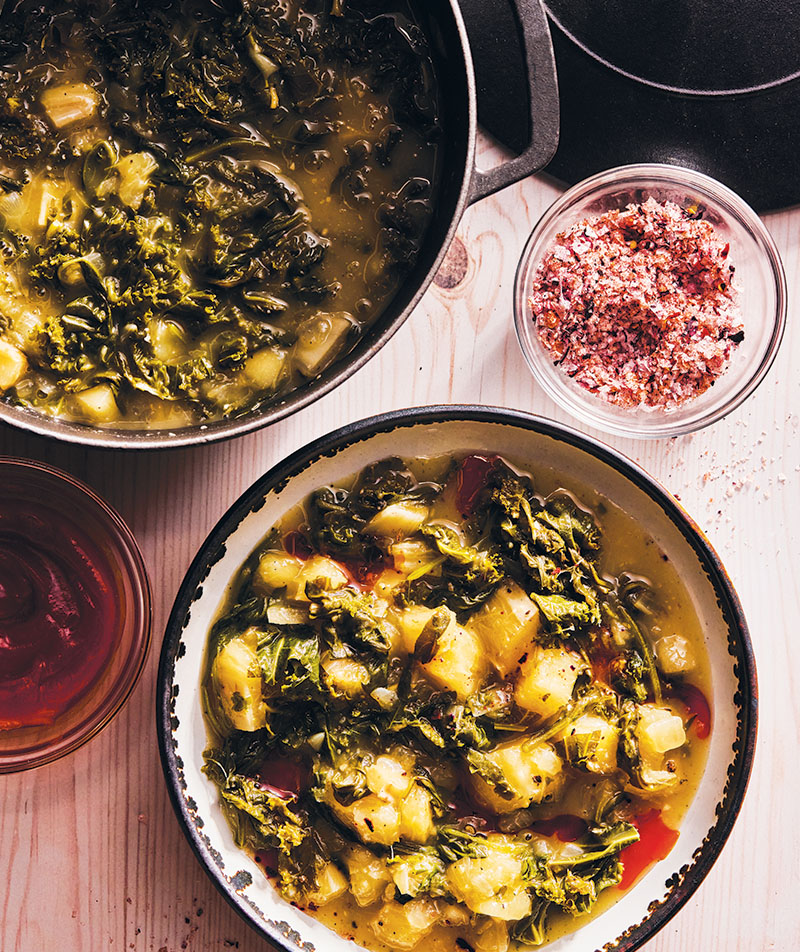
In the case of West African, Ethiopian and Turkish cuisine, there’s an added benefit: Each one is already plentiful with protein-forward ingredients such as grains, legumes and vitamin-rich vegetables coveted by vegans, vegetarians and others seeking healthier foods. While meat substitutes such as tofu, seitan and lab-grown proteins have a place, the focus in 2024 is on vegetables and authentic plant-based eating.
West African Food Trends
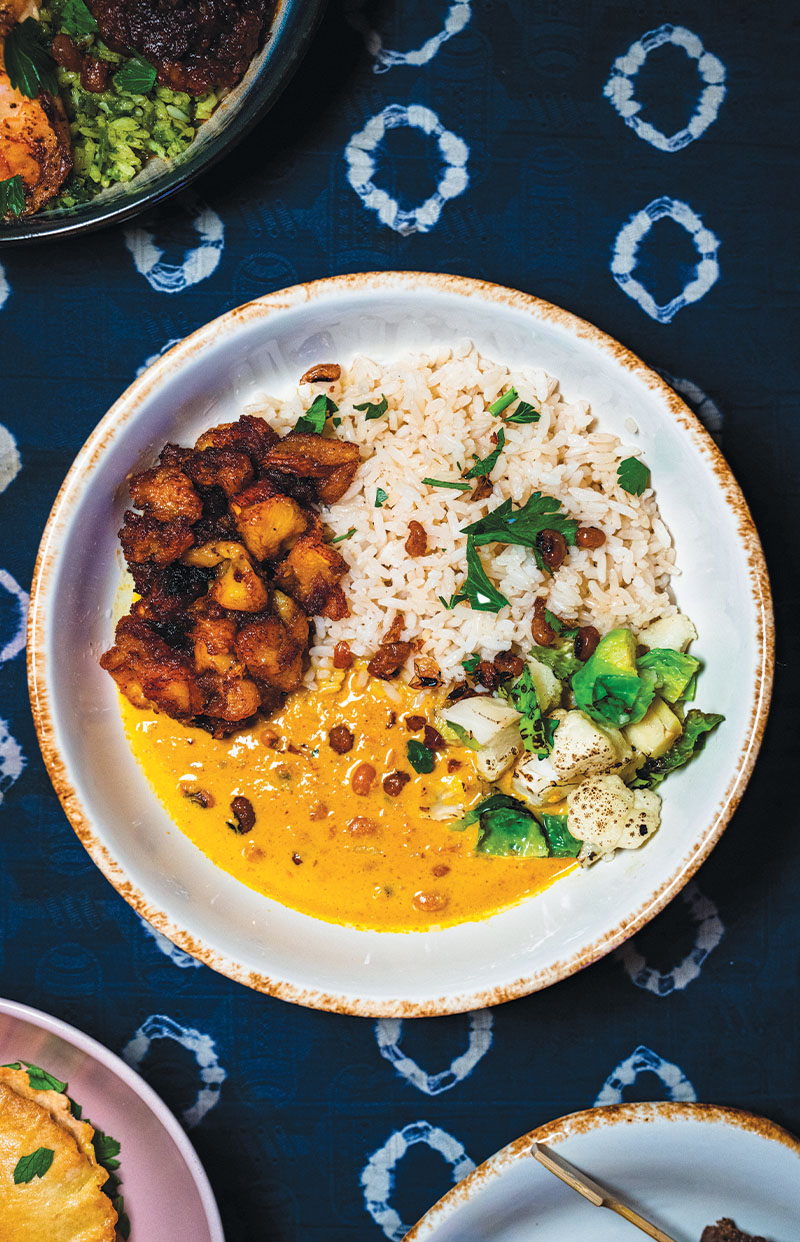 Searches for West African dishes such as fufu increased 120% in 2023, according to Google trends data, while a spate of new restaurants, such as the recently opened Ubuntu in Los Angeles, has taken major food towns by storm. Ubuntu’s chef, Shenarri Freeman, has been at the helm of the plant-based movement since she debuted her vegan soul food restaurant Cadence in 2021. At Ubuntu, she traces Southern soul food back to its West African roots, offering up fonio grits, charred okra salad and jollof arancini with curry, tomato and miso.
Searches for West African dishes such as fufu increased 120% in 2023, according to Google trends data, while a spate of new restaurants, such as the recently opened Ubuntu in Los Angeles, has taken major food towns by storm. Ubuntu’s chef, Shenarri Freeman, has been at the helm of the plant-based movement since she debuted her vegan soul food restaurant Cadence in 2021. At Ubuntu, she traces Southern soul food back to its West African roots, offering up fonio grits, charred okra salad and jollof arancini with curry, tomato and miso.
Additional West African Restaurant Offerings
 Ndambe’ stew – tomato-based with black-eyed peas, sweet potato and okra
Ndambe’ stew – tomato-based with black-eyed peas, sweet potato and okra
From Chef Pierre Thaim of Terranga in New York City, which recently opened a second location
The Motherland Curry – coconut curry, yaji spiced vegetables, black-eyed peas and plantains over white rice
From Owner Ope Amosu of ChopnBlok in Houston
Mixed greens with carrots, gala apples, cranberries and African honey vinaigrette; Ofe Egusi stew of melon seeds, palm oil, onions, garlic, red bell pepper, spinach and boiled Ghana yam; Akara and Dodo – black-eyed pea fritters and fried plantains with seasonal vegetables in Ata Din Din sauce as part of a tasting menu
From Chef/Owner Dozzy Ibekwe of Dozzy’s Grill in Chicago
Turkish Vegetarian Dishes Making a Splash
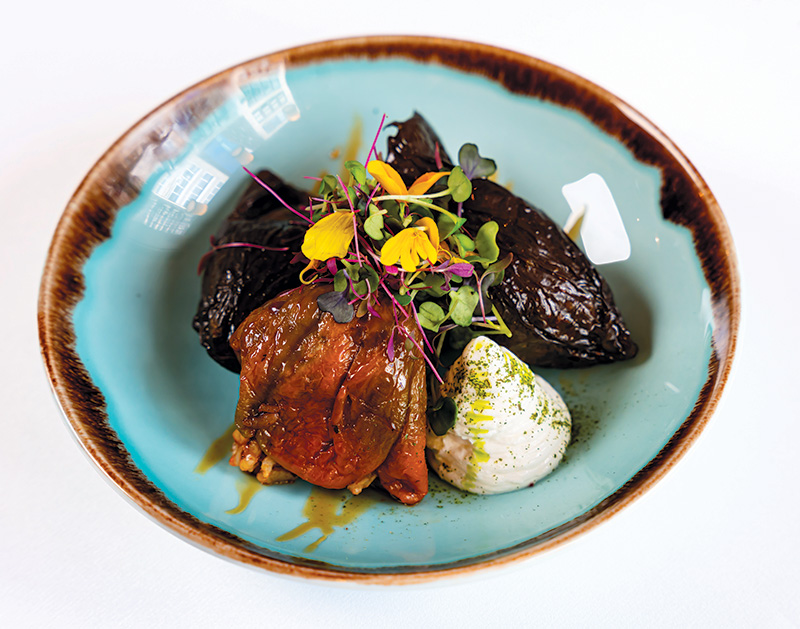 Turkish cuisine is at the heart of the Mediterranean diet, which in 2023 was voted the best overall diet for a record-breaking sixth consecutive year, according to US News & World Report. It was also voted best plant-based diet, no doubt due to its heavy focus on fresh vegetables and whole grains and its famous preference for olive oil over butter.
Turkish cuisine is at the heart of the Mediterranean diet, which in 2023 was voted the best overall diet for a record-breaking sixth consecutive year, according to US News & World Report. It was also voted best plant-based diet, no doubt due to its heavy focus on fresh vegetables and whole grains and its famous preference for olive oil over butter.
But Andy Urkin, the restaurateur behind New York-based Nar, says it isn’t just the cuisine’s love of healthy fats that make Turkish food an ideal vehicle for plant-based noshing. “Western Turkey and Southern Turkey cuisine are mostly vegetarian dishes, all with fresh vegetables and herbs,” he says. “It’s a natural part of the cuisine. It comes from years of culture.”
While Nar also serves meat-forward dishes, Urkin says the vegan dishes are just as popular, citing the mass appeal of the restaurant’s mezze sampler – a staple in modern Turkish cuisine.
Vegetarian Dishes With a Turkish Spin
Sun-dried eggplant and pepper dolma
From Nar in New York City
Mercimekli Imambayildi – oven-roasted eggplant with green lentils, mint, tomato sauce and garlic yogurt
From Omer Artun’s Meyhouse in Sunnyvale, California
Carrot Tarama – sauteed carrots with yogurt, sour cream, garlic and walnuts with griddled pita
From Troy in Austin
Vegetarian Latin Food Grows in Popularity
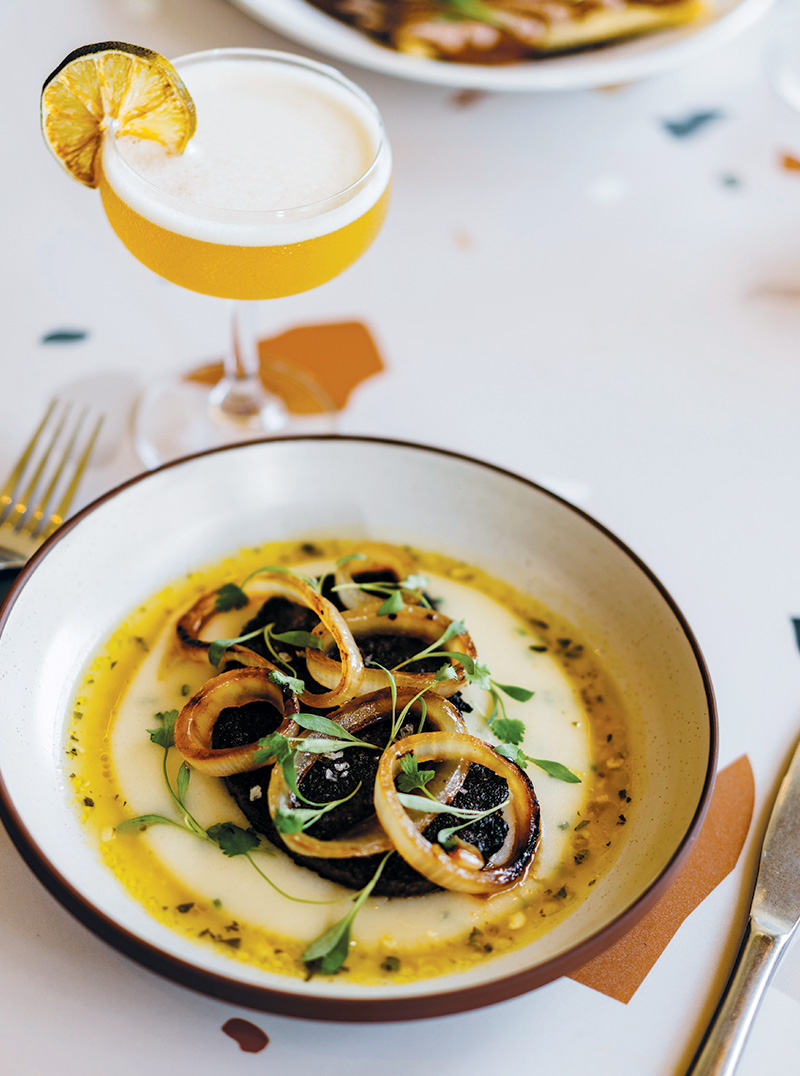 Latin food might not be synonymous with plant-based cooking, but, according to a recent study published in the academic journal Meat Science, Latin as meat-centric is a common misperception. In fact, meat didn’t become a staple in Mexican food until the Spanish conquest in 1521. Fast-forward to 2023: 20% of Mexicans identify as vegetarian, and meat consumption is on the decline. Now Latin chefs in the U.S. are returning to their roots with a menu of plant-based items.
Latin food might not be synonymous with plant-based cooking, but, according to a recent study published in the academic journal Meat Science, Latin as meat-centric is a common misperception. In fact, meat didn’t become a staple in Mexican food until the Spanish conquest in 1521. Fast-forward to 2023: 20% of Mexicans identify as vegetarian, and meat consumption is on the decline. Now Latin chefs in the U.S. are returning to their roots with a menu of plant-based items.
In Los Angeles, customers form a line down the block to try the plant-based offerings at Villas Tacos. The vegan trio includes frijoles con nepal (black beans and cactus), frijoles con papas (black beans and potatoes) and soyrizo con papas (vegan chorizo and potatoes), all served in the restaurant’s handmade blue corn tortillas with a side of lime, radishes and hibiscus-pickled onions.
Latin-Inspired Vegetarian Dishes
Cubano with jackfruit lechon, glazed seitan ham, pickles, cheese and mustard on Cuban bread; Emmoladas con Verduras – corn tortillas, seasonal vegetables, mole poblano, refried beans and blue corn aioli
Chef/Co-Owner Reid Trapani of La Semilla in Atlanta
Phat Hass Tacos, fried avocado, pico de gallo, chipotle cream and pepita cilantro slaw; Taco Banh Mi Burrito, grilled tofu, quinoa, black beans, cabbage, pickled carrot, daikon spicy mayo, jalapeños and cilantro
From Hijo de su Madre in Los Angeles
Ethiopian Vegetarian Food on the Rise
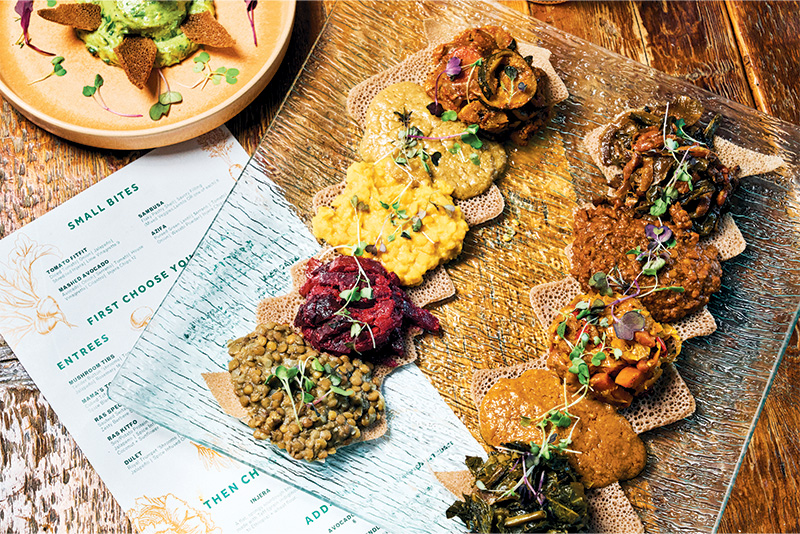 Perhaps no cuisine is better suited for a plant-based lifestyle than Ethiopian. According to Romeo Ragalli, chef/owner of Ras Plant Based in Brooklyn, New York, veganism is a natural part of life in Ethiopia, where more than half the population belongs to the Ethiopian Orthodox Church and abstains from eating animal products 180 days of the year. As a result, Ethiopians have a knack for plant-based cooking and a slew of hearty local ingredients such as legumes, lentils, yellow peas and collard greens that can easily replace meat as the protein base of a dish.
Perhaps no cuisine is better suited for a plant-based lifestyle than Ethiopian. According to Romeo Ragalli, chef/owner of Ras Plant Based in Brooklyn, New York, veganism is a natural part of life in Ethiopia, where more than half the population belongs to the Ethiopian Orthodox Church and abstains from eating animal products 180 days of the year. As a result, Ethiopians have a knack for plant-based cooking and a slew of hearty local ingredients such as legumes, lentils, yellow peas and collard greens that can easily replace meat as the protein base of a dish.
“Most of our guests are not even plant-based,” says Ragalli. “The feedback we always get is they don't miss the meat when they're eating here.”
Ras Plant Based is part of a new vanguard of upscale eateries taking Ethiopian mainstream and bringing renewed attention to local, no-frills institutions.
Popular Ethiopian Vegetarian Dishes Around the US
Ye’misir Kike We’t (yellow pea sauce) – split peas cooked in wot oil, onions garlic curry and ginger; Qey Sir – beets cooked with garlic and ginger, both served on injera bread
From Chercher, three locations in the Washington, D.C. area
Yefasolia Wot – mixed vegetable stew of green beans, carrots, garlic, ginger and turmeric
From Rahel, which opened in LA’s Little Ethiopia neighborhood in 2000
Global Spices to Introduce New Flavors
Taking the spice route is one of the easiest ways to introduce an on-trend cuisine to diners.
Some options to shake up the menu:
Berbere – Ethiopia
A bright red, fiery seasoning made of more than 30 individual spices, including nutmeg, cumin, dried red chile peppers and Ethiopian cardamom, derived from the native plant corrorima. Use it as a rub for vegetables or throw it in a stew for extra heat.
Sumac – Turkey
As tart and tangy as a cranberry with the same crimson coloring. Use it for a dash of acid in dips and salad dressing.
Suya – West Africa
A spicy peanut-based dry rub that’s a popular seasoning found in Nigerian street food of the same name. Make it plant-based by swapping out the smoked beef for plantains, which pairs nicely with suya’s nutty flavor profile.
Sofrito – Cuban
While the ingredients vary by region and even city, most include tomatoes, green bell peppers, garlic and onions pureed into a chunky sauce as a base for many Latin dishes. Don’t even think about making Cuban black beans without it.

